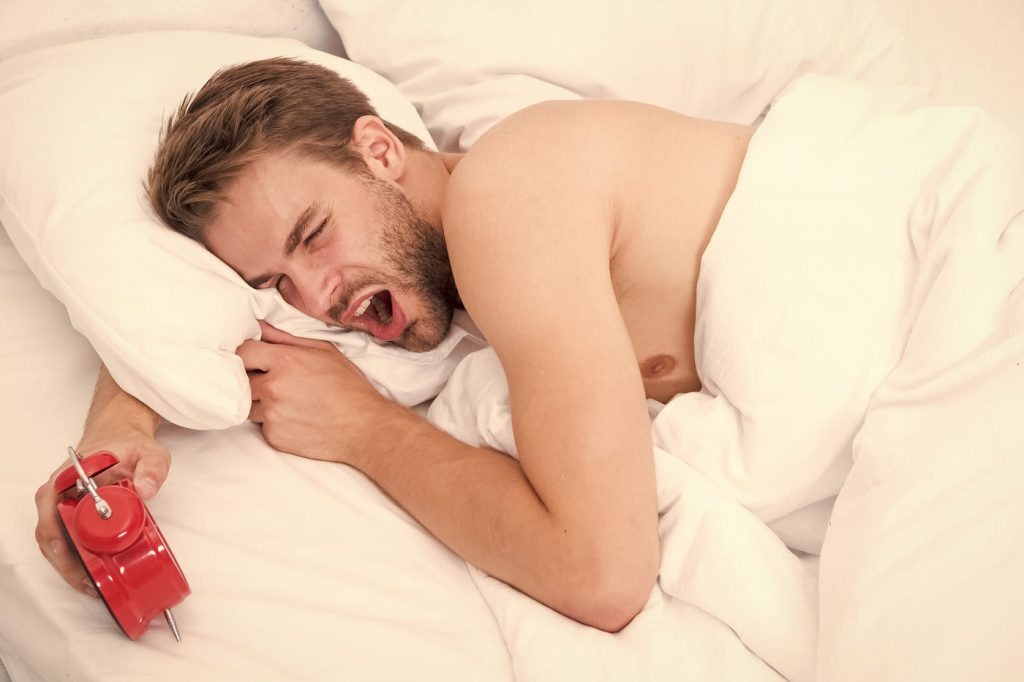What is sexsomnia?
Sleep sex, also called sexsomnia is more common than people think.

There are many types of behaviors people can have during sleep. Some people sleep walk, others sleep talk. For some the behavior has a sexual nature. It can be self-stimulation or trying to initiate sex with others whilst asleep. Whilst this may seem funny, for those who have sexualized behaviors during sleep it can cause significant stress and worry about what might happen when they go to sleep. If their behavior is misunderstood, or happens when sharing a house or bed with others, it can even have legal consequences.
Research has found that sexsomnia episodes occur during the non-rapid-eye-movement (NREM), which is the dreamless, deepest stage of sleep. Though sexual dreams are not considered sexsomnia as they do not involve any physical actions or behaviour.
Parasomnias that arise out of NREM such as sleep walking, sleep talking and sleep sex occur via similar mechanisms. The brain doesn’t sleep as a single unit, and different parts of the brain can behave as if they are partially awake at times through the night. This is what happens with non-REM parasomnias.
For a parasomnia to occur, there needs to be activation of the more primitive parts of the brain, such as the brain stem and parts that control automatic responses and behaviors, whilst other parts of the brain, such as the cerebral cortex remain deactivated. This results in someone having active muscles and being able to respond to simple inputs or questions, so they can carry out simple, basic or automatic behaviors, but not being conscious or having any recollection of what has happened.
Why some people walk whereas others have sexualized behaviors is not clear. It doesn’t appear to be a reflection of people’s underlying personality or true wishes, as sexualized behaviors during sleep occur in a range of people including those who are not usually sexually active. There is still a lot more research to be done in this area, as experts don’t really understand why some people can have sexualized behaviors during sleep whereas others don’t.
People suffering from the condition engage in sexual behaviors while asleep, often with other people. The problem with the disorder is that the person who has it may not realize it. The ones to notice it first would be the people who share the bed with them like their partners, parents, friends or roommates. The person suffering from it may never notice it until someone else brings it to their attention. Some of the most common symptoms are: Fondling with the bed partner, pelvic thrusting, actions mimicking sexual intercourse, spontaneous orgasm and being unaware of the behavior later, the person may have their eyes open and act awake.

While doctors aren’t sure what causes sexsomnia, they do know that it starts after puberty and that people who sleepwalk or sleep talk are more at risk for sexsomnia than people who don’t. Doctors do know several factors that can contribute to the condition. These factors include sleep deprivation, stress, fatigue, anxiety, alcohol, certain medication and irregular sleep patterns.
Some underlying medical conditions can also lead to sexsomnia. These conditions include sleep disorder like sleepwalking or sleep talking, restless leg syndrome, sleep-related epilepsy, gastrointestinal reflux disease, migraine and head injuries. Alcohol or other sedatives including some prescription medications and illicit substances such as marijuana can increase the risk of parasomnias. Alcohol has the effect of sedating the cerebral cortex and also activating the brain stem, which is the mechanism via which parasomnias occur.
Also stress can increase the risk of parasomnias occurring. Often stress and sleep deprivation occur together, with work or study deadlines, and this combination can bring out parasomnias.
The good news is that sexsomnia is treatable. If there are certain triggers that are causing you to have sleep sex, you might benefit from therapy, counselling or medication. Maintaining good sleep hygiene and keeping a regular sleep schedule can also help. Abstinence from alcohol is advised. Patients are also advised to participate in therapy to deal with embarrassment and shame.
Because of the nature of sexsomnia it can cause difficulties in relationships. If the behavior is self-stimulation, partners can be disturbed by it or be concerned that it’s happening because of unsatisfied needs within the relationship. If the behavior is initiating sex, partners can understandably feel intimidated or violated and working with a psychologist or counsellor can help.
If you have sexsomnia, it’s worth seeing a health professional like a sleep physician to look at factors that may be increasing the risk of events occurring and what can be done to reduce that risk.
The risk of criminal charges is always a possibility for someone suffering from this sleep disorder. If a man tries to have sex with a stranger while sleeping, for example, he could be charged with sexual assault. Some people may even have unprotected sexual intercourse while sleeping, resulting in a dangerous sexually transmitted disease.
